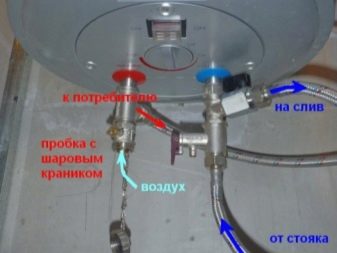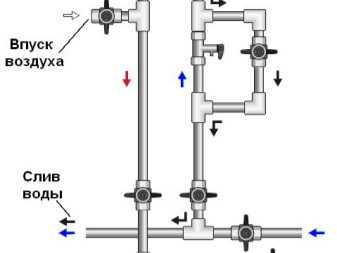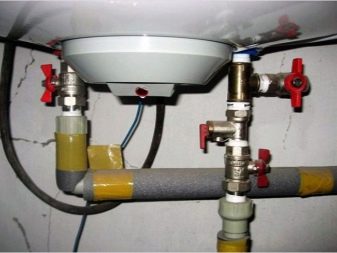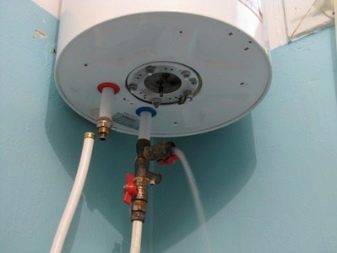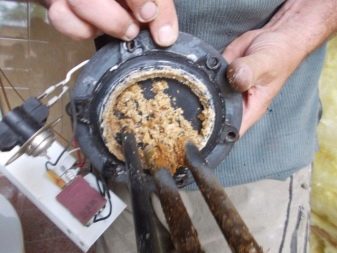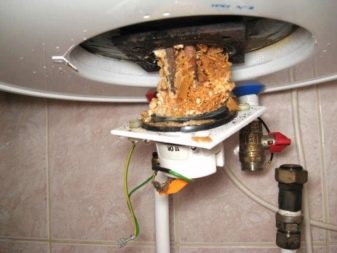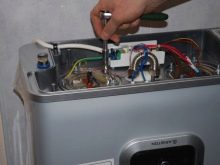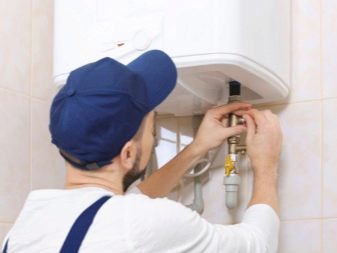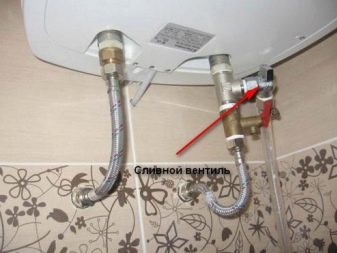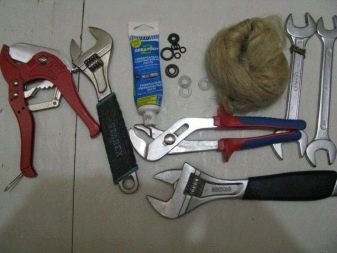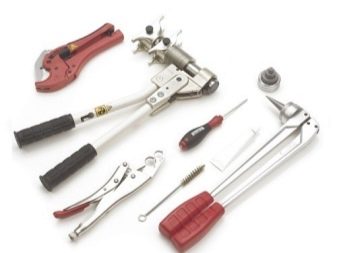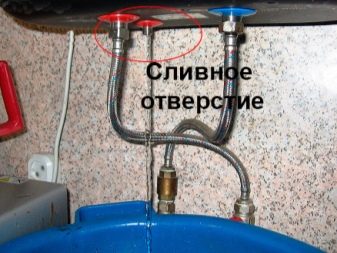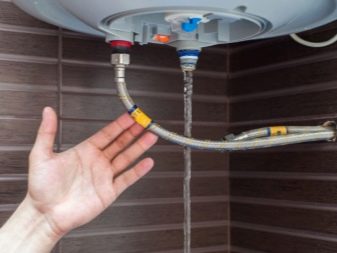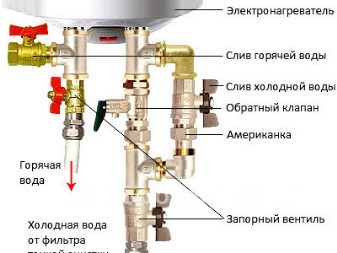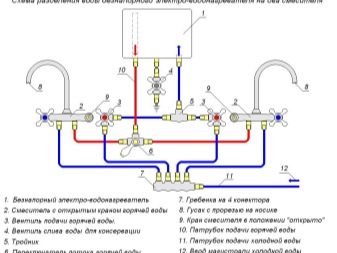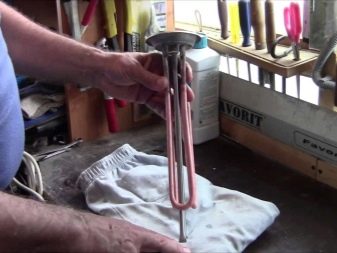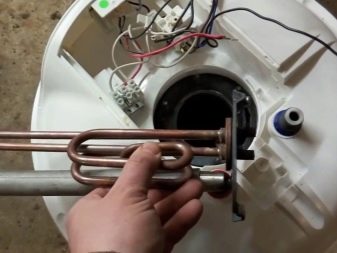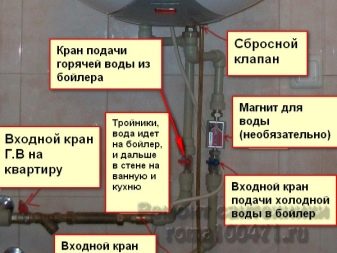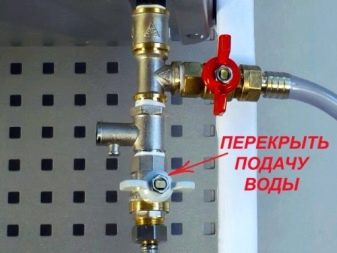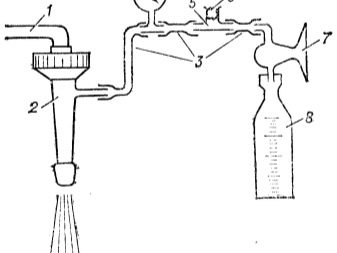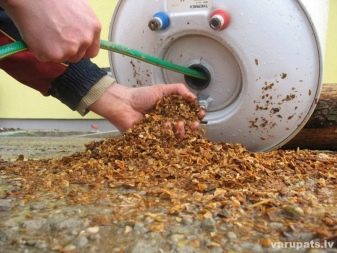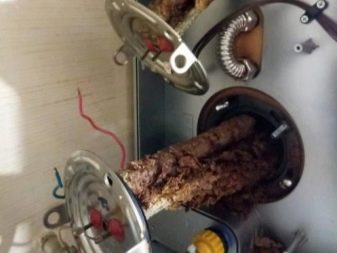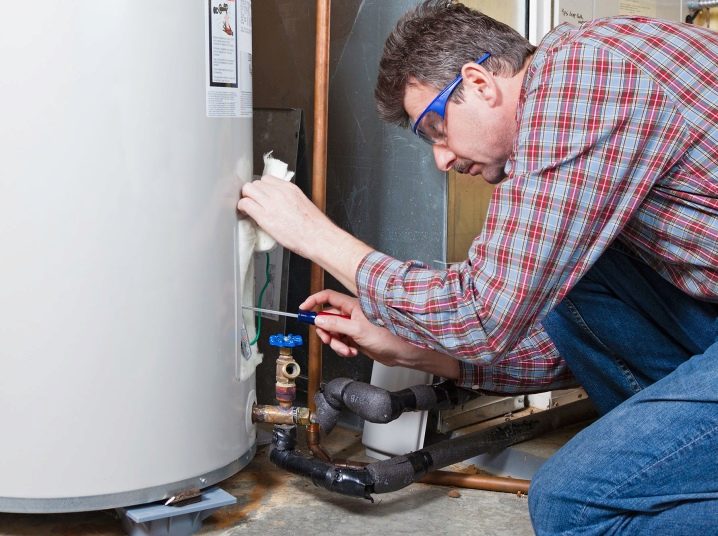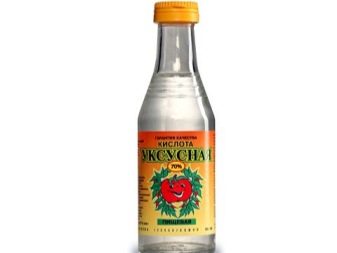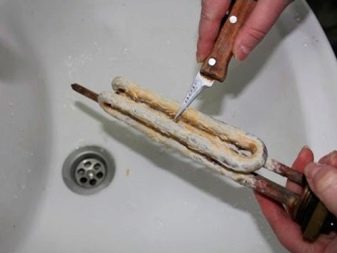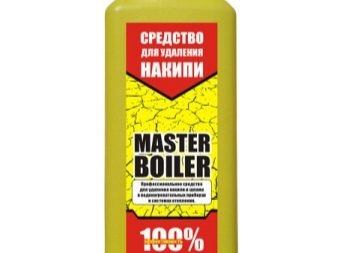How to drain the water from the water heater?
In households that do not live during the cold season, engineering works should be carried out annually to prepare water heating systems for the winter period. It is useful to know some features of the technology and the use of devices for heating water, so that during the discharge of liquid there are no difficulties.
What is the procedure for?
The need to drain the liquid from the boiler becomes relevant if the temperature in the room drops to five degrees or more. This is a serious indicator that allows you to think about the beginning of work.
Temperatures with a minus sign are especially dangerous for batteries and fluid heaters. Such a situation poses a real threat of significant damage to the instrument and piping.The water heater is designed to work only at a positive temperature, as many manufacturers write in the instructions about. Therefore, if the unit is put on winter conservation, then water must be drained from it.
In Russia, winter realities are more severe than in warm Europe or Asia. Therefore, if you leave the water heater full in an unheated room, it will deteriorate. In addition, the boiler must be periodically cleaned, because the quality of water and the degree of its hardness in different regions can vary considerably. The time intervals between prophylactic cleansing can vary depending on the conditions.
Urgent drain
The easiest and most effective way to drain water from the tank is to unscrew the inlet and outlet hoses. At the same time it is necessary to closely monitor the water flow. If two openings are open, the pressure may be excessive, this should be taken into account.
Gradually draining the liquid from the device may look like this:
- the unit is de-energized;
- water supply closes;
- a hot water tap opens;
- water is drained from the tube itself;
- the tap remains open to allow air to flow in from the outside;
- attached tube to remove water;
- after completion of the work, the tap closes.
The whole process takes several hours. To speed up the drain, you can free the pipe from the hose, so its throughput will be increased.
After complete drainage of water it is necessary to carry out preventive cleaning of the entire system. The cause of many faults is the failure of the magnesium anode. Often this happens precisely because of the lack of regular cleaning.
To conduct a thorough cleaning should be on average once a year. Scale, settling on the walls, works as a thermal insulator. Without proper care, the unit may start to work incorrectly (the layer of scale builds up from the inside so that the device will start to heat itself). At the same time, the power consumption will significantly increase (up to 50%). Even if a layer with a thickness of 0.4 cm is present on the heating element, this reduces the heat loss to 17%. The efficiency at the same time falls by 25%.
There are several reasons that indicate an immediate cleaning:
- weakened water;
- the water stopped heating rapidly;
- during operation, the unit makes sounds that have not been observed before;
- valve gradually tends to water;
- water does not spill out of the tank.
If the boiler is broken, the liquid is removed according to the standard scheme. Often in the vessel remains a little liquid, there is the smell of hydrogen sulfide. To eliminate this phenomenon, the tank should be boiled. This will eliminate pathogenic microflora.
Before starting work it is strongly recommended to read the instructions. Each model has its own characteristics, so you should read the recommendations of the manufacturer. Some companies do not allow opening the device case without the presence of a specialist from a certified service center. In such circumstances, the device can be put in order only on the territory of a specialized center.
When working with a heater, it is necessary to observe safety precautions, it is recommended to disconnect it from the mains. If the unit has a high temperature, it is recommended to pause, wait until it cools down. Heaters sometimes have to be removed from the wall if this is the only way to bring the unit in order.
To dismount the strapping use the following tool:
- hex key (6 mm);
- adjustable wrench №2;
- rubber hose;
- screwdrivers (cross-shaped and ordinary);
- waterproofing bentonite cord.
This "gentleman's set" is quite enough to carry out preventive work at the proper level.
other methods
There is another method of removing water. In this case, shut off the tap through which the liquid enters the unit, open the mixer and remove the water. On the valve opens the "box". The disadvantage of this method is that the liquid goes out too long. The reason is that air enters the container and prevents the liquid from being removed.
You can resolve the issue if you remove the pipe from the hot water. At the same time, the valve should be twisted with great care to avoid damage to the thread. Before starting the operation, it is recommended to put a couple of drops of engine oil on the valve. This will protect it from damage when unscrewing.
Before you start working in the necessary order, you should make sure that:
- the crane is closed;
- water does not flow;
- the unit is not hot.
To flush the liquid completely and do it correctly, Be sure to familiarize yourself with the water heater device, which consists of the following elements:
- internal capacity;
- thermal insulation;
- decorative coating;
- control device;
- electrical cable;
- device showing temperature.
The magnesium anode is an important node that needs to be changed every two years. It is designed to effectively soften water, counteract the formation of lime deposits. TEN is a special element thanks to which water heats up. It is made of a tungsten or nichrome spiral. She, in turn, turns into a copper casing. This design allows you to quickly heat the liquid with maximum efficiency.
The damper does not allow mixing with cold and warm water. The regulator allows you to heat the liquid up to 76 ° C, keep the constant mode. If the temperature reaches 96 ° C, then a special relay turns off the system automatically. The tube, which is responsible for the intake of water, is located in the lower part, the liquid is drained through it.
There must be an entry and exit marking. On the pipe is a gasket blue color, the output is marked in red. To drain the water by all the rules, it is imperative to examine the scheme of the device, which is often attached to the purchase.
The most popular connection is with a tee.In this case, a special tee with a crane is placed on the line between the device and the valve. Safety valve is required. He is responsible for ensuring that water does not return back if it is absent in the circuit itself. A shut-off valve prevents hot water from draining from the unit.
The practice of pumping water using a tee is very common. This method makes it possible to simply and effectively remove the remaining water without using any tool. If done correctly, the liquid can be removed from the tank for ten to fifteen minutes.
This is done as follows:
- the unit is de-energized;
- water supply is blocked;
- a hot water tap opens;
- water is removed from the tube through the mixer;
- put on the hose, unscrew the valve on the drain;
- closing armature is closed.
Do not allow air to enter the channel, otherwise the drain will last a long time. As already mentioned, the air works like a cork and prevents the active removal of fluid.
Flushing
Flushing the boiler is necessary. Water should not stagnate, otherwise deposits are formed on the wall of the heater that are very difficult to remove.If the storage water heater did not work for a long time, it is recommended to pass 8-10 buckets of water through it, for this you must first remove the lid. Repeat this procedure should be once a month. Running water removes pathogenic microorganisms, improves the work of the entire heating system.
Before starting the boiler, it is imperative to check that the hot water valve is closed, as well as the valve through which the liquid exits. If the tee is mounted on both sides, then this option is quite suitable.
In this case, the algorithm of the work will be as follows:
- the crane is closed;
- mounted drain hose;
- the mixer opens to loosen pressure and remove residual water;
- the valve on the tee is unscrewed.
All actions must be done in a strictly defined order, only then it is possible to achieve the desired result.
Recommendations
The boiler needs complex cleaning after two years of operation. To avoid problems with cleaning the tank, as well as extend its service life, Some rules should be followed:
- apply a filter that reduces water hardness, especially in the country;
- do not buy products in which there are galvanized electric heaters;
- Do not purchase devices with heating elements made of ferrous metals (they quickly fail due to corrosion).
Water heater cleaning chemicals can be replaced with a solution of acetic acid in a ratio of approximately 150 ml per 5 liters of water. This simple "old-fashioned" method is very effective, it works flawlessly. To speed up a chemical reaction, some heating is sometimes included. Sometimes cleansing is done with the help of the well-known Coca-Cola.
When cleaning the device, chemical compounds should not fall on the rubber gaskets, otherwise they will deteriorate, and the boiler will begin to leak. To prevent this from happening, the gaskets are wrapped with plastic wrap.
The best tool for cleaning heating elements is a tool for eliminating scale.designed for electric kettles. The principles of operation of water heating devices are in many respects similar, therefore the liquid is suitable for both variants. The heating unit is placed in an enameled container, which is filled with water with a cleaning composition.
Without the special need to drain water from the water heater is not recommended.If you just want to "practice", do not do it. Such "exercises" can lead to the fact that the device will become unusable, and it will be impossible to restore it.
For how easy it is to drain water from a water heater, see the video below.

